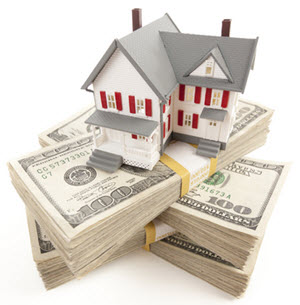It can be difficult to keep track of what things actually cost. Many small sums can easily pile up, making it difficult to save enough for a down payment on a house.
 One way to take control is to actually start writing down every purchase and any other expense. Make sure you chose a system that is convenient to you, otherwise you will probably lose steam halfway through the month. You can use a traditional paper notebook, make notes in your mobile phone, save all receipts during the day and enter them into a spreadsheet on your home computer, etc. Another method is to use a credit card for most purchases, and check the credit card statement to see what you actually bought. You will still have to enter any cash purchases manually tough. Also, don’t forget to set money aside so that you can pay your credit card bill in full when it arrives. Finally, if you have a smart phone, there are apps that you can download that will help you with keeping track of your spending.
One way to take control is to actually start writing down every purchase and any other expense. Make sure you chose a system that is convenient to you, otherwise you will probably lose steam halfway through the month. You can use a traditional paper notebook, make notes in your mobile phone, save all receipts during the day and enter them into a spreadsheet on your home computer, etc. Another method is to use a credit card for most purchases, and check the credit card statement to see what you actually bought. You will still have to enter any cash purchases manually tough. Also, don’t forget to set money aside so that you can pay your credit card bill in full when it arrives. Finally, if you have a smart phone, there are apps that you can download that will help you with keeping track of your spending.
Once you have a clear and detailed view of all your expenses, it will be easier for you to see which purchases you can do without. $5 on take-out coffee every day, five days a week? If this is true for 50 weeks of the year, it means that you are spending $1,250 a year on take-out coffee.
Expensive credit can be a money pit. Sit down and take a look at all your debts. Rather than putting money into a savings account, maybe your focus right now should be to get rid of expensive debt. That way, you free up more money in the long run. Also, by cleaning up your debt situation, you get a better looking credit report and higher credit score for the day when its time to apply for a house mortgage.
If you have a lot of small debts with high fees and interest rates (credit card debt, items paid with installments, etc) you goal should be to pay them off as quickly as possible. Don’t just make the minimum payments; create a plan for how you can get rid of these debts as quickly as possible.
In some situations, it is actually a good idea to take out a larger loan with a bank and use it to pay off really expensive credits right away. Of course, this is only an option if your credit report and credit score is high enough for a bank to be willing to give you a loan with better T&C’s than what you have for your current debts.
There is a limit to how much you can save buy simply cutting expenses in your daily life. If your take home pay is 4,000 USD a month, you won’t magically be able to put aside $3,500 a month simply buy cutting down on Starbucks expenses. Therefore, it is always a good idea to look at possible side incomes instead of just focusing on how you can spend less money. Be honest with yourself and decide who much of your free time and energy that you are willing and able to give up in order to afford a house.
 Don’t save – buy a house!
Don’t save – buy a house!Sometimes the best way to get your dream house is to buy your non-dream house. Even though regular savings can help you afford a down-payment on a house, there are many houses where the down-payment is so big that saving up would take decades. Instead of trying to save up for your dream house, you might want to consider getting into the property ladder far below you dream house and then gradually move your way up. Instead of going for your dream house, buy a house that you can afford – provided of course that you have reason to believe that it will increase in value.
This method works best for people who are willing to get their hands dirty and do some renovations in their own free time (but also pay for professionals when necessary). Always keep a keen eye on the budget, because you want to put much less money into the renovation than the predicted increase in property value.
If you’re interested in this approach, we recommend that you read our articles about Ugly Duckling Property and Fixer Upper.